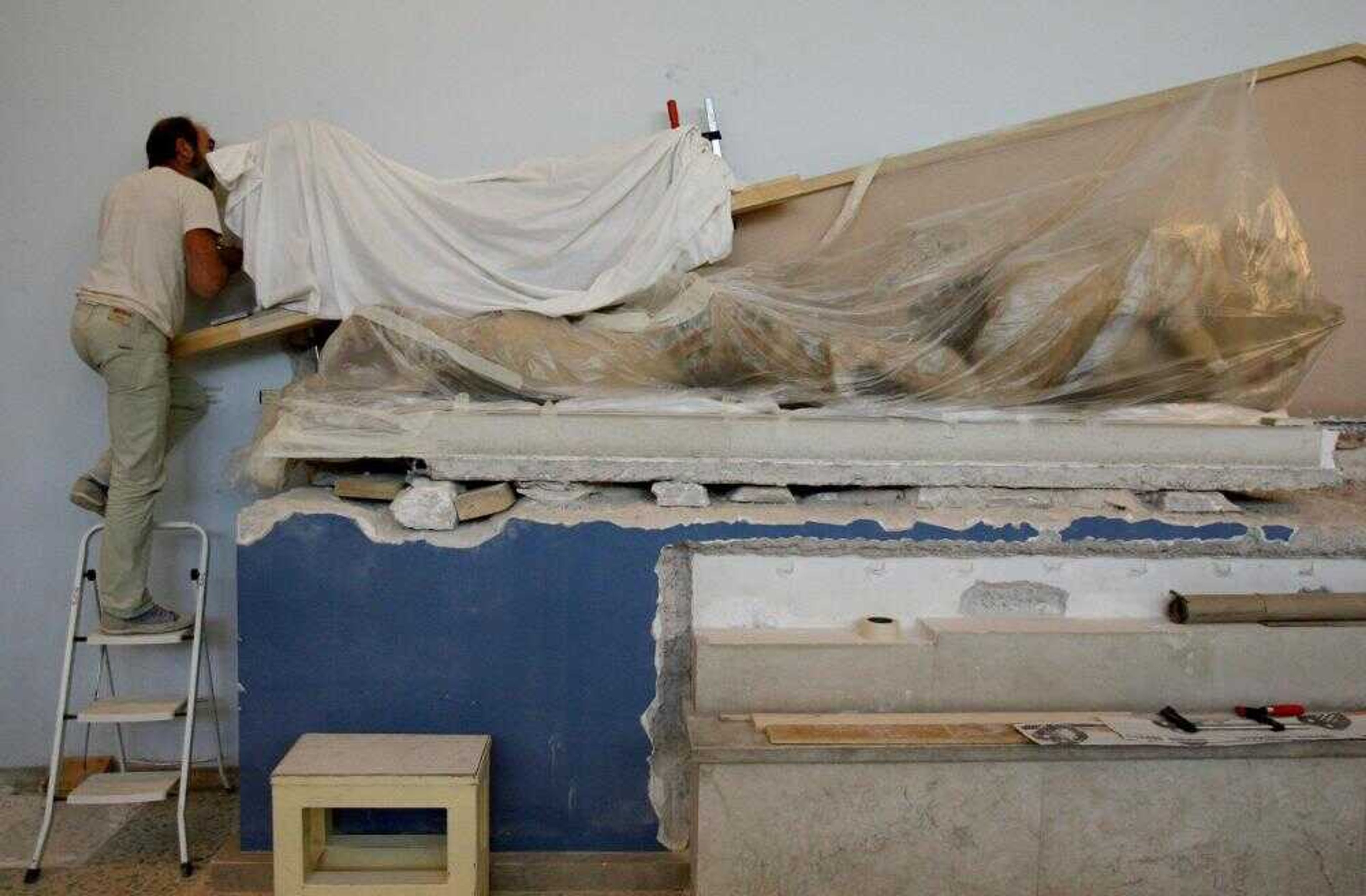Acropolis statues set for 'historic removal'
ATHENS, Greece -- Swaddled in white drop cloths, hundreds of sculptural masterpieces from the Acropolis are waiting to be delicately lifted by crane to a glass and concrete museum nearing completion at the foot of the ancient citadel. This month, officials plan to start whisking some 4,500 artifacts from the old, cramped Acropolis museum...
ATHENS, Greece -- Swaddled in white drop cloths, hundreds of sculptural masterpieces from the Acropolis are waiting to be delicately lifted by crane to a glass and concrete museum nearing completion at the foot of the ancient citadel.
This month, officials plan to start whisking some 4,500 artifacts from the old, cramped Acropolis museum.
It will be the first time the artifacts -- some of which are considered among the most important works of antiquity -- have been moved from the site.
"Everything is ready for this historic removal," Culture Minister Michalis Liapis said Wednesday. "God willing -- and weather permitting -- the removal will start on Sunday, Oct. 14."
A trial run will be held next week.
The first piece to make the 400-yard journey will be a 2 1/2-ton marble block from the Parthenon frieze, a 2,500-year-old sculpted strip depicting a religious procession that ran around the ancient temple just below roof level.
"This is one of the biggest and the least fragmented of all the blocks in the frieze," senior conservator Dimitris Maraziotis said.
Supervising engineer Costas Zambas said the transfer will take at least a month and a half, although bad weather could prolong the operation. It will cost $3.55 million.
Using three cranes up to 170 feet high, a team of 35 workers will relay the priceless artifacts -- mostly from the sixth and fifth centuries B.C. -- off the Acropolis hill into the purpose-built new museum.
"Every single part of the operation will be difficult and requires great care," said Zambas, a veteran of the long-running Acropolis restoration project who was involved in removing the remaining sculptures from the Erechtheion and Parthenon temples for display in the old museum.
Wearing padded harnesses, the sculptures will be hoisted into Styrofoam-filled boxes made of plywood and metal. Each crate will take up to 2 1/2 hours to reach the new museum, traveling just a few yards above ground level, according to Zambas. Up to four crates will make the trip every day.
Beyond the creation of an architectural landmark in its own right, there are political aims behind the long-delayed $183 million museum. Greece hopes the new building's top-level display conditions might propel the country's decades-old campaign to regain the British Museum's collection of sculptures from the Parthenon, removed 200 years ago by Lord Elgin, a Scottish diplomat.
Initially scheduled for completion before the 2004 Athens Olympics, the new 215,000-square foot museum was delayed by legal fights and new archaeological discoveries at the site -- many of which will be visible under glass floors. It will contain more than 4,000 works, 10 times the number on display in the old museum.
The two-story building was designed by U.S.-based architect Bernard Tschumi in collaboration with Greece's Michalis Photiadis. The building will be capped by a glass hall containing the Parthenon sculptures. The glass walls will allow visitors a direct view of the ancient temple.
The new museum is expected to open in sections next year, but the full collections will probably not go on view before 2009.
Connect with the Southeast Missourian Newsroom:
For corrections to this story or other insights for the editor, click here. To submit a letter to the editor, click here. To learn about the Southeast Missourian’s AI Policy, click here.








